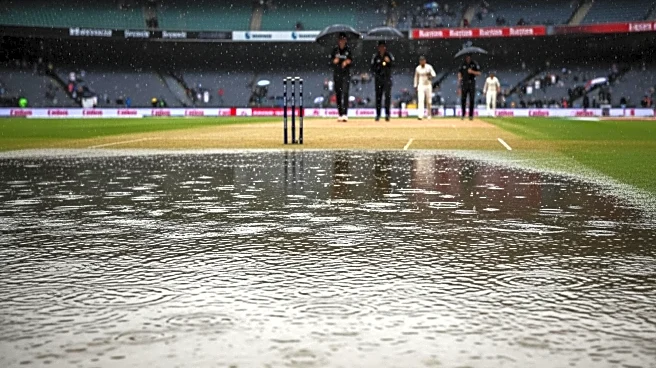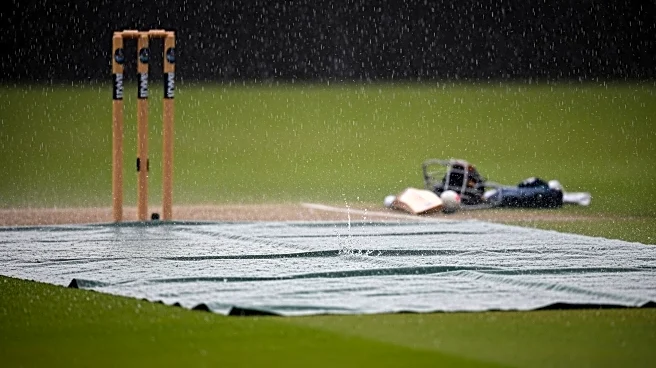What's Happening?
South Africa's women's cricket team achieved a decisive 10-wicket victory against Sri Lanka in the ICC Women's World Cup match held at the R. Premadasa Stadium. The match was affected by rain, reducing
Sri Lanka's innings to 20 overs, in which they scored 105 for 7. South Africa's spinners, Nonkululeko Mlaba and Masabata Klaas, played a crucial role in restricting Sri Lanka's scoring. In response, South Africa chased down the DLS-adjusted target of 121 with ease, thanks to an unbeaten partnership between Laura Wolvaardt and Tazmin Brits. Wolvaardt scored 60 not out, while Brits contributed 55 runs, leading their team to victory in just 14.5 overs.
Why It's Important?
This victory is significant for South Africa as it marks their fourth consecutive win in the tournament, elevating them to second place in the Women's World Cup standings, just behind Australia. The win demonstrates South Africa's strong performance and adaptability in challenging weather conditions, showcasing their potential as serious contenders for the title. For Sri Lanka, the loss further diminishes their chances of advancing to the semi-finals, as they remain winless with only two matches left to play. The outcome highlights the impact of weather conditions on cricket matches and the importance of strategic adaptability.
What's Next?
South Africa will aim to maintain their winning streak and secure a spot in the semi-finals, while Sri Lanka faces the challenge of improving their performance in the remaining matches to avoid elimination. The teams will need to prepare for potential weather disruptions in future games, emphasizing the need for flexible strategies. Stakeholders, including team management and players, will likely focus on refining their tactics to handle adverse conditions effectively.
Beyond the Headlines
The match underscores the broader implications of climate and weather on sports events, particularly outdoor games like cricket. It raises questions about the preparedness of teams and organizers to handle such disruptions and the potential need for improved infrastructure and contingency planning. The adaptability of players and teams in response to weather challenges could influence future tournament strategies and preparations.











